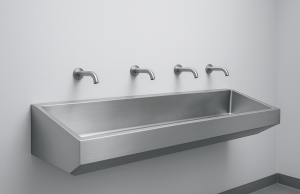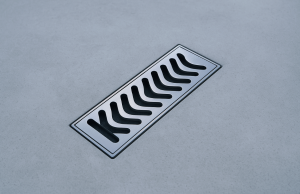Construction projects nowadays are supposed to be fast, efficient and without errors. Delays are costly, frustrating to the client, and slow future work. New technologies assist construction contractors to produce projects in a better, safer, and faster way.
The 10 contemporary construction solutions that may assist in making projects time-saving and minimizing the needless delays include:
1. Use Building Information Modeling (BIM)
Building Information Modeling or BIM is a system that enables contractors to develop elaborate building digital models prior to the commencement of construction. This assists in detecting issues at an early stage to save on errors and rework.
- Develop a 3D computer simulation of the whole project.
- Identifies plumbing, electrical and structural conflicts.
- Arrange plans to be shared among all the teams to execute together.
- Monitor materials, costs and timelines effectively.
Using BIM ensures smoother workflows, minimizes delays, and improves communication among teams.
2. Prefabrication and Modular Construction
Prefabrication is the construction of sections or components elsewhere and then constructing them at the construction site. Modular construction is the same, except that it involves building modules. The two save time and minimize on-site work.
- Construct walls, floors or entire rooms in factories.
- Move ready-built parts on-site and assemble them within a short period of time.
- Provide uniform quality since production is under control.
- Minimize weather or on-site error delays.
Prefabrication and modular methods allow projects to progress faster and meet deadlines without compromising quality.
3. Smart Scheduling Software
To avoid delays, it is necessary to plan properly and schedule. The use of modern software contributes to planning work, monitoring of the process, and workflow optimization.
- Establish specific milestones and deadlines of every task.
- Track real time progress and detect bottlenecks.
- Make schedules dynamic in order to enhance efficiency.
- Spread resources in order to prevent downtime.
Smart scheduling helps to keep everyone on track, on schedule, and will not waste time.
4. Drones for Site Monitoring
Drones offer the construction sites a view of the site as a bird making the monitoring of the site to be quicker and precise. They decrease manual inspections and assist teams to detect problems in the early stages.
- Survey aerial sites in a fast and safe way.
- Identify errors or deficiencies on time.
- Record photographs and videos as a form of progress reports.
- Monitor equipment and material position on bigger sites.
Drones enable quicker decisions and do not cause delays that may be brought about by issues that are realized on the ground.
5. Advanced Construction Materials
New construction materials are time saving and efficient on site. These materials are aimed at lessening the workforce, accelerating the construction, and prolonging their life.
- Quickly-setting concrete enables the rapid following up of the work.
- Frames made of light weight steel are manageable and easier to install.
- Durable materials or self-repair minimize maintenance and repairs.
- Modular or pre-finished materials conserve time on finishing.
Selecting the appropriate materials will assist the contractors to stay fast and do not compromise on quality.
6. 3D Printing in Construction
3D printing is transforming the way buildings and components are produced. Big printers are capable of producing walls, furniture, or structural elements with both speed and accuracy.
- Create sophisticated designs more quickly than conventional.
- Automate repetitive work and save on labour.
- Reduce mistakes through printing of correct parts.
- Tailor made pieces when there is a special project.
Despite its early development, 3D printing is promising to accelerate the construction process.
7. Lean Construction Methods
Lean construction is concerned with efficiency, planning and minimization of waste. It is aimed at doing less or more and avoiding delays and errors.
- Arrange activities to eliminate unproductive waiting of employees.
- Have materials and equipment ready on hand.
- Minimise the movement at the site.
- Track performance in order to detect improvement points.
The lean techniques enhance productivity and make projects complete within a shorter time with quality.
8. On-Site Robotics
Repeated and labour intensive jobs on the construction sites are increasingly carried out by robots. They are the supplement to human workers and quicken the workflow.
- Automate the work, e.g. bricklaying, welding or painting.
- Reduce human error and increase accuracy.
- Release skilled labour to work in more complicated tasks.
- Work around the clock without exhaustion and become more efficient.
Robotics enables projects to run faster and minimises delays through manual labour bottlenecks.
9. Real-Time Collaboration Tools
Real time collaboration tools are used to enable students, including those in remote regions, to interact with their peers via instant messages and emails among other communication avenues.
- Post photos, share designs and reports instantly.
- Respond to any change of plans instantly.
- Track update and keep a record of updates.
- Minimise the mistakes as a result of ineffective communication or slow instructions.
Live cooperation keeps everyone at the same level and projects do not have time-wasting delays.
10. Optimise Site Practices and Sustainability
Site management saves time and helps to keep the projects on time. Sustainable practices do not only ensure the environment is never harmed but also make construction easier.
- Prepare materials, equipment, and machines easily.
- Reduce wastes and reuse of materials.
- Maintain safety standards to prevent accidents and delays.
- Plan site layout to improve the workflow and energy efficiency.
In case of projects such as warehouse refurbishment, smart site practices and sustainability guarantees quicker process of delivery without compromising the quality and safety standards.
Conclusion
Modern construction solutions have made it possible to have faster project delivery. Digital modeling and prefabrication, robots, and lean practice, all these tools are designed to enhance speed and efficiency.
By using the solutions, construction contractors are able to save time, cut costs and yet keep the high-quality standards. These 10 strategies will be useful in achieving successful project completion, enhanced productivity, and clients satisfaction.
Construction nowadays is not merely about creating structures but making them smarter, quicker and with less effort.
Frequently Asked Questions (FAQs)
- What strategies help deliver construction projects faster?
There are various methods through which construction can be accelerated, and they include the following: prefabrication, modular construction, lean construction, smart scheduling and modern materials. These help in reducing delays and improve efficiency.
- What are the top construction technology trends in 2025?
Major trends are Building Information Modeling (BIM), site surveillance drones, 3D printing, on-site robotics, intelligent collaboration, high-quality materials, and eco-friendly building solutions.
- Which construction technique is most common for building modern homes quickly?
The quickest ways are prefabrication and modular construction. Part of the house is made in other places and then assembled at the site which saves on time and labour and still does not compromise quality.
- How can a construction project be fast-tracked?
Overlapping phases, prefabricated components, lean construction, advanced materials, modern scheduling and collaboration tools can be used to speed up projects, minimize delays, and use modern tools.














